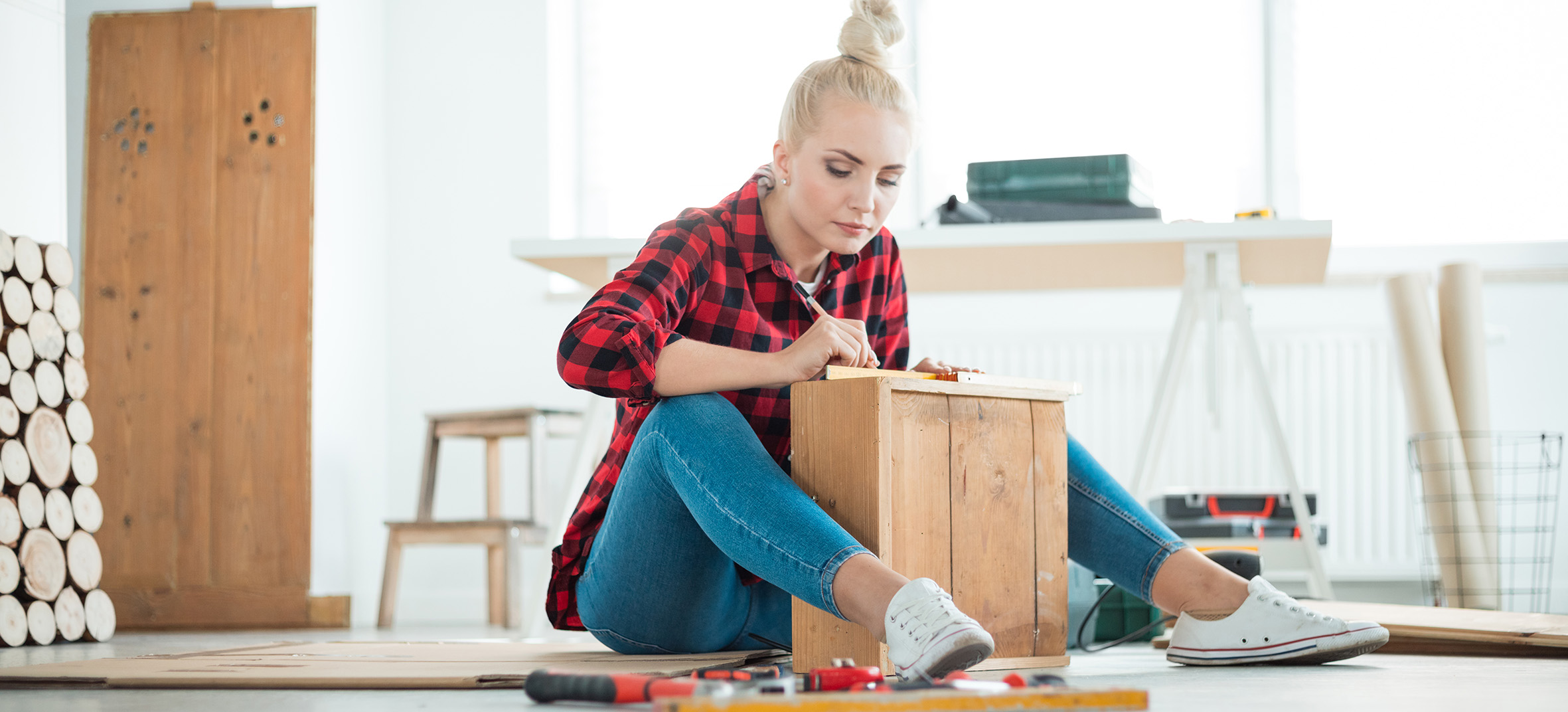DIY is amazing. It can build your skillset, help you gain confidence, and incur significant cost savings.
While there was a spike in DIY’s popularity in 2020, the number of interested people has somewhat plummeted to normal in recent times. There can be misconceptions around these useful practices, believed to be a bother or too elaborate for people with a basic skill set.
However, anybody can get involved with DIY if they adopt the right attitude. How you structure your learning matters too. After all, if you don’t bite off more than you can chew, you can gradually learn new techniques and sustainably develop your skills. You may enjoy the beginnings of a lifelong hobby this way!
Many DIY project ideas are simple but effective as well. Here’s a quick list of what they are and what they might entail.
Assembling Flatpack Furniture

Assembling flatpack furniture isn’t half as laborious as many people make it out to be. It’s actually rather simple so long as you bring your best self to the process.
There have been many complicated feelings around flatpack furniture in recent years. Regardless of where you initially stand on these matters, keeping an open mind and adopting a learner’s mentality will hasten the process significantly.
Of course, assembling flatpack furniture can be simply because you have instructions to read. You’re also given some of what you need, including screws (though you’ll need to procure tools separately). So long as you remain level-headed, you can breeze through the instructions and make steady progress.
If you have trouble with the instructions, you can consult others online who’ve assembled the furniture and can provide guidance. You may be able to interact on forums or find YouTube tutorials taking you through everything, having filmed their efforts. Ultimately, with enough patience, anybody can assemble flatpack furniture.
Laying Your Own Flooring

How easy laying your own flooring is depends on some particulars of your projects. There are ways to enjoy a more straightforward process here.
Are you able to use tile saws to cut different types of tiles? Can you take humidity and temperature into account as you lay hardwood flooring? Tiles, hardwood flooring, and carpets can be among the most challenging floor project to take on yourself, and it’s advised you let a professional take over here.
For DIY, laminate flooring is far easier to work with. You don’t need any specialist knowledge or skillsets, as laminate floors are typically designed to be pieced together like a puzzle, with each piece clicking into place. The surface you have installed doesn’t need to be ripped up, as the laminate can often fit over it.
Ensure you get your laminate flooring from a reputable supplier. Companies like Floors Direct have a great stock of laminate floors and occasionally have sales underway to help you cut costs. There are unique styles for everyone here, and you can also order free samples if you’d like to try them before you buy. You’ll feel more confident about your DIYing prospects with their stock.
Fixing Smaller Problems
Fixing smaller problems in your home is a great way to maintain your affinity for DIY. The little jobs ensure you never get rusty in your efforts.

Changing light bulbs can be straightforward, as they only need to be screwed in and out of place. There are some basic principles to remember, though. Obviously, turn the electricity off before you tamper with the light bulb, and also ensure you have a steady balance upon a ladder as you operate. These measures ensure your safety.
New door handles could be installed so that you have a more crisp experience opening and closing doors in your property. Of course, door handles are more than just a practical mechanism and have an aesthetic all of their own that can reinforce your home’s decorative themes. Often, you only need a screwdriver and some screws to replace them.
Bleeding a radiator can be easy. First, turn off your heating. Then, turn the valve by attaching your radiator key to the square groove at the centre. Turn anticlockwise until a faint hissing sound can be heard. Any leakages should be wiped away with a cloth. When the hissing stops, you’ll know it’s time to retighten the valve. After that, the radiator should feel warm all over after you turn the central heating back on. Moreover, bleeding your radiators is easy and can help you save money as well, so that’s worth looking into further if you’re interested.
Upcycling Old Furniture

Upcycling old furniture can be a labour of love once your skills develop. These DIY efforts allow you to fall in love with your old furnishings, potentially help the environment, and once again save money.
You can strip down wooden furniture, giving old and tired wood a fresh, vibrant, and more youthful aesthetic. Alternatively, you could provide new coats of varnish or paint, toying with the surface in that way as well. You could utilise stencils to apply interesting patterned designs on either approach, accenting whatever you’ve made.
If you wish to enjoy the more adventurous side of these efforts, you could consider using salvage. Wooden tables no longer used could be broken down and turned into a nice wine rack, for instance. Salvage lets you splice different furniture together, giving you a unique approach to DIY. Change stool legs into something more aesthetically looking ones from Hairpin Leg Co.
Upcycling is particularly effective because it’s a project that can start small and spiral into a lifelong passion. There’s a thrill in using your old things, or even other people’s, to create something enchanting and new. In the end, there’s an endless amount of opportunity here.
Conclusion
If you’re new to DIY, you should aim to start small but progressively become more enthralled once you realise how thrilling the learning journey can be. DIY can be a project that seems large scale or small scale and can feature instructions or just a need to follow your creative instincts. Some DIY projects can be simpler than they’re given credit for, too, as there can be multiple ways to engage them at different levels. Try to strip back your assumptions and give DIY a go.





